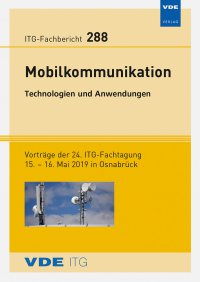Self-Organizing Network functions for handover optimization in LTE Cellular networks
Konferenz: Mobilkommunikation – Technologien und Anwendungen - 24. ITG-Fachtagung
15.05.2019 - 16.05.2019 in Osnabrück, Deutschland
Tagungsband: Mobilkommunikation – Technologien und Anwendungen
Seiten: 7Sprache: EnglischTyp: PDF
Persönliche VDE-Mitglieder erhalten auf diesen Artikel 10% Rabatt
Autoren:
Bag, Tanmoy; Garg, Sharva; Preciado, Diego; Shaik, Zubair; Mitschele-Thiel, Andreas (Technische Universität Ilmenau, Germany)
Mueckenheim, Jens (Hochschule Merseburg, Germany)
Inhalt:
The heterogeneous distribution of user’s mobility and traffic profiles in mobile networks leads to challenges handling localized network congestions and radio links failures (RLF). Mobility Load Balancing (MLB) and Mobility Robustness Optimization (MRO) are two Self-Organizing Network (SON) use-cases designed to gain network’s controllability for these challenges. In this paper we propose a scheme to control some parameters related to the A3 trigger event for handover management in order to deploy MLB and MRO independently. MLB modifies the Cell Individual Offsets (CIO) and is able to transfer the excess load from the overloaded eNodeBs to the less congested neighboring eNodeBs, whereas MRO adjusts the A3 event handover parameters – Hysteresis and Time to Trigger (TTT), autonomously based on the mobility of the UEs and reduces the Radio Link Failures due to too early or too late handovers. Simulations for MRO and MLB are conducted on NS-3 simulator and they are evaluated with optimized values of the handover parameters for different ranges of UE mobility speeds and load scenarios. The results show that MLB balances the cell traffic with the optimal configuration of CIO values and MRO improves the success rate of handovers with the optimal set of hysteresis and TTT selection based on UE mobility.


